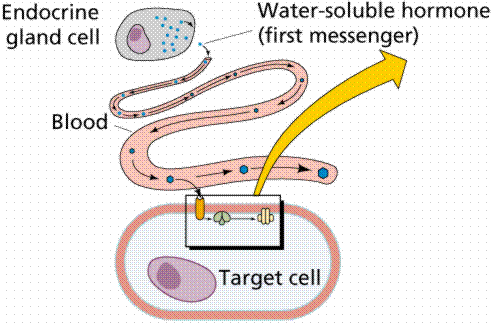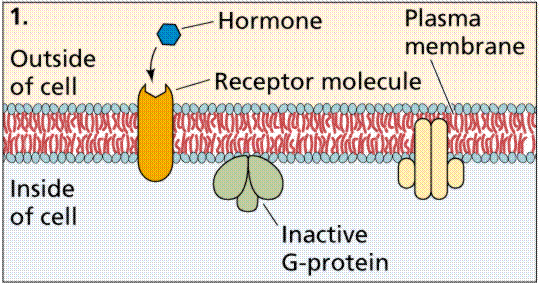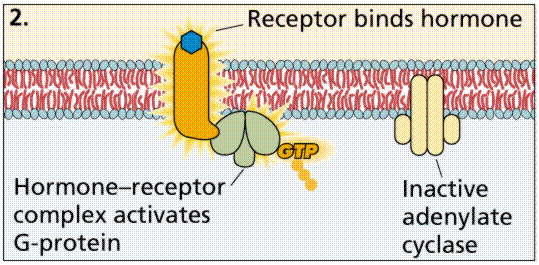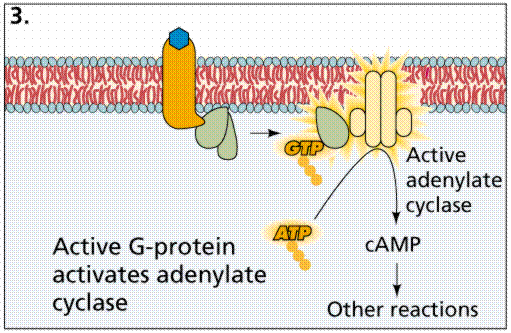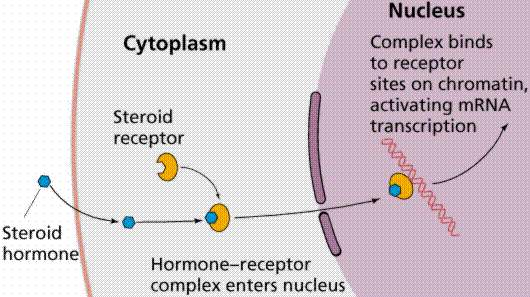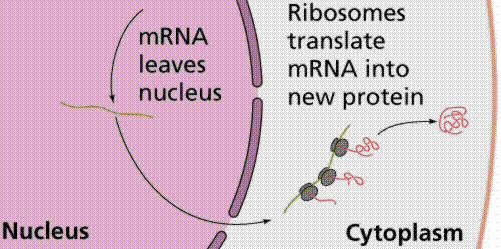Describe the major divisions of the nervous system, both anatomical and functional
- The Central Nervous System (CNS)
- consists of the nervous tissues in the brain and spinal cord
- processes and conducts sensory data (from within and outside) and motor controls (ex. skeletal sys)
- seat of higher functions including intelligence, memory, learning and emotion.
- The Peripheral Nervous System (PNS)
- connects CNS to the limbs and organs of the body
- consists of the nerves and ganglia outside of the brain and spinal cord (rest of the body)
- all neural tissue outside cns
- Autonomic Nervous System - Involuntary and controls the body's visceral functions
- Arise from specific parts of the spinal chords (C, T, L)
- Parasympathetic Nervous System
- control homeostasis and the body's rest-and-digest response - Sympathetic Nervous System
- mobilize the body's fight-or-flight response. - Enteric Nervous System
- controls the gastrointestinal system which includes the stomach and intestines (small & large intestine).
- Somatic Nervous System - associated with control of movement by skeletal muscle via spinal nerves, cranial nerves and association nerves
Efferent vs Afferent -
- Afferent neurons are sensory neurons that carry nerve impulses from sensory stimuli towards the central nervous system and brain
- Efferent neurons are motor neurons that carry neural impulses away from the central nervous systmem and towards muscles to cause movement
> > Many cells within the nervous system can be classified as part of more than one of the sub-systems within the nervous system - motor neurons located within the inner-layers of the stomach are enteric motor neurons - part of the ENS, and are also part of the PNS because they are not located within the CNS
* auto - self / nomic - law > self governing
Differentiate between the structure and function of the sympathetic and parasympathetic divisions in the autonomic nervous system
Gangleons - is a nerve cell cluster located in the autonomic nervous system composed mainly of somata and dendritic structures.
Sympathetic
- controls the body's stress response "fight or flight" - executes functions
- prepares for activity & exertion - i.e. provides glucose, increases heart rate, dilates pupils, inhibits digestion
- centrally located along the thoracic and lumbar regions of the spinal cord
- CNS > pre-gangleonic fibers (lightly mylinated, short &close to spine) > ganglion (close to spine) > releases ACh into ganglion > synapse to post-gangleonic neurons (long, unmylinated) > releases norepinephine > sympathetic information to target
- one signal can trigger many receptors at once hence shoerter pre-ganglionic
- relaxes constrictive functions that make it easier for the body to function under stress - i.e. breathing easier (bronchiodialation) to allow for maximum lung capacity
- stimulates the adrenals to release norepinephrine as a hormone via pre-ganglionic > ACh > stimulates *adrenal medulla to produce norepinephrine
* The adrenal medulla is the principal site of the conversion of the amino acid tyrosine into the catecholamines epinephrine, norepinephrine, and dopamine. Rather than releasing a neurotransmitter, the cells of the adrenal medulla secrete hormones.
Parasympathetic
- controls body's responses during "rest & digest" - maintains functions
- conserves body energy - i.e. increasing gut mobility, stimulate digestive secretions, slow heart rate.
- arises from brain stem and sacral region of spinal cord
- counteracts parasympathetic actions - i.e. relaxes muscles, bronchial tubes constrict (normalizes lung capacity).
- CNS > pre-gangleonic neurons (long, lightly mylanated, closer to effector organs) > releases ACh into ganglion > synapse to post-ganglionic neuron (short, unmylinated) > ACh into tissue causing a parasympathetic response
- more specific one on one communication hence longer pre-ganglionic fibers
* The structure of a system is related to its function * - the foundation of anatomy & physiology
Describe the general structure of a neuron, and name its important anatomical regions
http://andonanothernote.weebly.com/uploads/1/0/9/7/10978818/1331028762.jpg
Neuron -
- a specialized cell that transmits and receive signals throughout the body
- respond to stimuli
- billions within the body
- neuron = nerve cell
Soma - body of a neuron cell which contains the nucleus and attaches to the dendrites and axon
Axon - a nerve fiber extending from the cell body of a neuron and carrying nerve impulses away from it to other cells (other dendrites, muscles, etc.)
Axon Hillock - where the soma meets the axon and where nerve signals are generated to travel if action potential is reached - basically, if the depolarization reaches the Hillock, it will open a series of voltage gated channels
Dendrite -
- Extensions of neurons that receive signals and conduct them toward the cell body
- Shorter branched
- All dendrites have synaptic knobs at the ends, which are the "connections" to adjoining nerves
Myelin Sheath - complex material formed of protein and phospholipid that is laid down as a sheath around the axons of certain neurons:
- Composed of Schwann Cells
- Protection of the nerve fiber
- Insulation of the nerve fiber
- Increases the rate of transmission of nerve impulses
Schwann Cells - type of glial cell - located in the peripheral nervous system that form the outer layer of myelin sheath around axons.
Nodes of Ranvier - Gaps that occur at regular intervals in the myelin sheath:
- Allowing nutrients and waste products to enter/leave the neuron
- Allowing nerve impulses to move along the neuron through a process of de-polarization and re-polarization of the nerve membrane
Synapse -
- a minute gap which nerve impulses pass from one neuron to the next, at the end of a nerve axon.
- at the synapse, an impulse causes the release of a neurotransmitter, which diffuses across the gap and triggers an electrical impulse in the next neuron.
- location of inter-cellular communication
Glial Cells - located outside the neurons in the CNS/PNS - specialized cells that provide support, nutrition, insulation and aid in signal transmission.
Explain the events that lead to the generation of a nerve impulse and its conduction from one neuron to another
Neuron Types
Sensory Input > Integration > Motor Output
Sensory Neurons (unipolar) - transmit signals from the sensory receptors toward the CNS
Motor Neuron (multipolar) - impulse moves from the CNS to the rest of the body
Inter Neurons (multipolar) - transmit signals between motor and sensory neurons
Anaxonic Neurons - the axon cannot be differentiated from the dendrites - some believe that such neurons have no axons and only dendrites.
Unipolar - single process / Multipolar - multiple processes / Bipolar - two processes
Electric signals and functions in the body
- uniform signal, strength and speed
- varies in frequency (numbers)
- neuron is like a battery waiting for current
Voltage - the potential energy generated by separate charges (membrane potential)
Resistance - barrier in which the current must travel through
Current - the flow of electricity form one place to another
How currents indicate the flow of +/- across cell membranes...
Sodium Potassium Pump - protein that straddles membrane and regulates 3 Na/ 2 K to change charge, dissolve gradients.
Ion Channels - allow for ions to pass across membranes under different circumstances: voltage, ligand (chemical - neurotransmitter), mechanically (physical)
> Ions diffuse across membrane down the electric chemical gradient, evening out the concentrations (away from other positively charged ions)
Action Potential
- a temporary reversal of a membrane potential, a brief depolarization caused by changes in current
- a biological chain reaction which sends electric signal down the axon
- neurons that contain voltage gated sodium channels open causes a chain reaction in voltage charge, continuing the signal
- potassium ion channels re-balance gradient
Myelin Sheath - allows for faster transmission because signals can "jump" over "Nodes of Ranvier" - saltatory conduction
Synapse Function
Pre-synaptic neuron - transmits through pre-synaptic terminal (typically axon terminal) which holds the Synaptic Vesicles
Synaptic vesicles - loaded with neurotransmitters which release into the synapse - regulated by a voltage-dependent calcium channel. Vesicles are essential for propagating nerve impulses between neurons and are constantly recreated by the cell.
Synaptic cleft - gap (less than 5 millionths centimeters apart) where the signal travels across
Post-synaptic neuron - accepts neurotransmitters in receptor region, though dendrites or membrane
Electrical synapse - Quickly & efficiently sends an ion current from nerve cells through gap junctions (continuous stimulation & uniform - heart)
Chemical synapse -
- Chemical signals that diffuse across a synaptic gap, can convert form chemical to electrical (abundant, slow & precise)
- Release, diffusion & reception of neurotransmitters in order to transmit signals
- AP activates the voltage gated Ca channels to open, releasing + calcium into membrane causing the synaptic vesicles to fuse with membrane and release chemical messengers (NT)
- Neurotransmitters (ACh) chemical messengers which bind to receptors on post-synaptic neurons
- NT bind to receptors causing ion channels to open creating a electrical signal
Acetylcholine - released at all neuromuscular junctions involving skeletal muscle fibers, at many synapses in the CNS, all nouron to neuron synapses in the PNS, at all neuromuscular & neuroglandular junctions within the parasympathetic divisions of the ANS.
Excitation & Inhibition -
- development of AP through NT connections
- dependent on which NT binds to which receptor
- Excite - depolarize - making it positive and closer to AP
- Inhibit - hyperpolarize - making it negative and driving AP threshold down
- AP depends on sum of all excite & inhibit
Neurotransmitters - after used: degrade, re-uptake, broken down by enzymes w/in cleft, diffused back across synapse to be absorbed by neuron that sent them
* * Drugs either excite or inhibit the production, release and re-uptake of NT
Endocrine System
endo - within & crinis - secrete
Endocrine System - the collection of glands and that produce hormones that regulate metabolism, growth and development, tissue function, sexual function, reproduction, sleep, and mood, among other things. Some organs also produce, store, and send out hormones, which are also considered part of the endocrine system.
Gland - makes or secretes hormones
Discuss the chemical composition of hormones and the mechanisms of hormone action
Receptors - a molecule that can bind to a specific hormone
Target Cells - a specific cell containing a receptor (protein found within or on cell) in which a hormone triggers a reaction
> > keys & locks - sometimes widespread or localized (paracrine)
- thyroid produces thyroxine which binds to most cells and stimulates metabolism
- pituitary produces follicle stimulating hormone which only binds to certain cells in the reproductive system
Hormone Cascade - a sequence of successive activation reactions, hormones characterized by a series of amplifications of an initial stimulus
Tropic Hormones - hormones that have other endocrine glands as their target - most are produced and secreted by the anterior pituitary. ex - Hypothalamus
HPA - Hypothalamic Pituitary Adrenal Axis -
- a complex series of interactions that regulate many of the body's processes
- endocrine interfacing with nervous system - coordinates with the sympathetic nervous system
- fight or flight - hypothalamus initiates, monitors and maintains cascade which activates both endocrine & nervous system response
- stimuli from senses and other nerve functions causes the hypothalamus to secrete corticotropin releasing hormone (CRH) & vassopressin into the stalk of the pituitary > causes the release of adrenocorticotropic hormone (ACTH) from the anterior lobe of the pituitary > stimulating adrenal response > causes the secretion of cortisol from the adrenal cortex > hypothalamus then senses cortisol in the blood and reduces output (negative feedback)
- endocrine response is more long lasting compared to nervous response
HPT - Hypothalamic Pituitary Thyroid Axis -
- sets the thyroid gland into motion to regulate homeostasis
- The hypothalamus senses low circulating levels of thyroid hormone - Triiodothyronine (T3) & Thyroxine (T4) - in the blood, causing it to release thyrotropin-releasing hormone (TRH), stimulating the pituitary to produce and send Thyroid Stimulating Hormone (TSH) to thyroid, which stimulates the thyroid to release T3 & T4 into the blood (iondinised) > increasing, decreasing or maintaining certain functions in the body (metabolism, appetite, muscle function, blood pressure, heart rate, etc.)
- A good metaphor for this is the hypothalamus is the person (it dictates the desired temperature), the pituitary is the thermostat (it automatically regulates the set temperature) and the thyroid is the heater (it produces or not, the heat in which the pituitary tells it to)
3 Types of Hormones
hormones - signaling molecules which bind to target cell and initiate a long term response
Peptide - the most common hormone structure, composed of short chain amino acids. They are secreted by the pituitary, parathyroid, heart, stomach, liver, and kidneys. Peptide hormones are synthesized as precursor molecules and processed by the endoplasmic reticulum and Golgi where they are stored in secretory granules. When needed, the granules are dumped into the bloodstream. Different hormones can often be made from the same precursor molecule by cleaving it with a different enzyme.
Steroid - specific to reproductive system, secreted by the gonads, adrenal cortex (thyroid) & placenta ( ex. epinephrine, testosterone & estradiol). Steroid hormones are derived from cholesterol by a hormone cascade. Defects along this series often lead to hormonal imbalances with serious consequences. Once synthesized, steroid hormones pass into the bloodstream; they are not stored by cells, and the rate of synthesis controls them.
Amine - Amines are derived from the amino acid tyrosine and are secreted from the thyroid and the adrenal medulla. They are stored as granules in the cytoplasm until needed.
Binding - chemical structure of hormones are either amino acid or lipid - determines if its H20 or fat soluble, allowing it to pass through membrane (lipid) or not, then binding to cell and either increasing or decreasing some of its functions - ideally to maintain homeostasis.
The action of steroid hormones. Images from Purves et al., Life: The Science of Biology, 4th Edition, by Sinauer Associates (www.sinauer.com) and WH Freeman (www.whfreeman.com)
Nervous system regulation -
- responds quickly to stimuli, through action potential and neurotransmitters
- quick responses, but short lived
- one way, one speed, varied frequency
Chemical system regulation -
- secretion of hormones into circulatory system to travel to specific target tissue
- slower and longer lasting
- relies on negative/positive feedback to regulate use
Define and describe negative and positive feedback
Negative feedback - a balance and check system that is self regulating, negatively reinforcing a fluctuating allostasis - ex. TSH & TRH released from the pituitary ceases when the hypothalamus senses acceptable thyroid hormones in the blood as produced by the thyroid.
Positive Feedback - a self-amplifying cycle where a change leads to even greater change in the same direction - ex. process of labor and delivery involving uterine contractions and oxytocin, constantly stimulating the other until the child is born (a cataclysmic event)
Endocrine Glands & Organs
Summarize the site of production, regulation, and effects of the hormones of the pituitary, thyroid, adrenal, and pineal glands (and some others!)
Hypothalamus
- located at the base of the brain
- synthesizes ADH , oxytocin and passed to posterior pituitary
- synthesizes regulatory hormone and secreted to anterior pituitary, stimulating or inhibiting pituitary hormone secretion
Pituitary -
- 2 lobed (anterior - adenohypophysis and posterior - neurohypophysis) located below hypothalamus
- secrets regularity hormones
- posterior - secretes oxytocin and ADH
- anterior - synthesizes and secretes ACTH, TSH, GH, PRL, FSH. LH after confirmation from hypothalamus (regulatory hormones)
Thyroid -
- secretes thyroxine (t4) and triiodothyronine (t3) - metabolism processed by deiodinase (peroxidase enzyme that is involved in the activation or deactivation of thyroid hormones)
- secretes calcitonin
- regulated by the pituitary gland - TSH
Parathyroid - secretes PH - important for regulation of calcium and phosphate of blood
Thymus - atrophies during adulthood and secretes thymusin
Pineal Glands - located behind hypothalamus & secretes melatonin
Heart - secretes naturetic peptide which regulates blood pressure
Digestive Tract - many hormones which assist in digestion
Pancreas- secretes insulin and glucagon
Kidneys - produce erythropoietin & calcitriol
Adrenal Glands -
- sit above each kidney
- Adrenal Cortex - outer part, secretes cortisol & mineralocorticoid and aldosterone - fluid balance, long term blood pressure, libido, etc - can be tumors but also functional issue related to stress - stress causes dysfunction!
- Adrenal Medulla - middle part, secretes Catecholamines: epinephrine and norepinephrine - sympathetic response (elevated hear rate, sweaty, rapid breathing, etc) - effected by tumor in pituitary or hypothalamus issues
Adipose Tissue (Fat) - Secrets leptin
Gonads -
- Testicles - androgens - testosterone & inhibin
- Ovaries - estrogen & progesterone
Hormones and their functions of specific endocrine glands -
http://apbiologywiki.wikispaces.com/Animal+Systems
* * full list of hormones and their functions https://en.wikipedia.org/wiki/List_of_human_hormones
Explain the role of the pancreatic endocrine cells in the regulation of blood glucose
Low blood glucose stimulates the endocrine system to increase glucose levels, by stimulating the alpha (pancreas) cell to secrete the hormone glucagon into the bloodstream. The glucagon travels to the liver, it's target cell, binding to the cell membrane of the liver cell (as it is not a lipid). It stimulates the liver to breakdown glycogen which will increase blood glucose levels, sending a negative feedback signal to stop stimulating the alpha cells pancreas to produce glucagon.
When there is a spike in blood sugar, the pancreases' beta cells are stimulated to release insulin into the blood which stimulates cells to absorb glucose. Liver and muscle cells convert glucose into glycogen for storage.
Explain the importance of circadian rhythms and the underlying physiological mechanisms that govern them
circa - approximately, dian - day
Circadian Rhythm - an endogenously generated rhythm that is both behavioral & physiological, fundamental to ALL LIVING CELLS
Stages of Sleep
N1 - light, easy to wake, hypnic myoclonia (sudden muscle contraction)
http://www.slicedlime.se/2009/06/polyphasic-sleep-gearing-up-for-an-experiment/
N2 - brain waves slow and sleep begins
N3 - deep sleep, woken results in grogginess, cellular/tissue regeneration & restorative healing
REM - shallow, varied breathing, muscles are temporarily paralyzed to prevent acting out dreams, short bursts of dream that get longer during REM, "rapid eye movement"
Sleep is extremely restorative to help process and remember emotions, and allow for our mind and endo/nervous system to forget, a much needed reset.
Effects of sleep deprivation - diabetes II, suppressed immune function, weight gain, cognitive impairment, ^ HRV, un-stabilized body functions.
Suprachiasmatic Nucleus - "master clock" located within the hypothalamus, connected to optic nerve cells which respond to light and dark - upon sensing light, stimulates pineal gland - raises body temp, heart rate, blood pressure, stop release of melatonin.
* mid-afternoon napping is part of our rhythm
Oscillator - the pendulum of the cellular rhythm
Melatonin - produced by the pineal gland to control sleep and wake cycles. levels rise at darkness, suppressed when eyes perceive light. Inhibited by blue light!
Describe the importance of this module’s information to the field of herbal medicine.
The systems covered in the badge are extremely important to understand as an herbalist. Many, if not all (!) of our bodies functions are directly linked to both of these networks. The endocrine system, when out of balance, can have many excess and deficiency manifestations, resulting in a wide rage of diseases. The nervous system is also linked to many pathologies, that with out a proper understanding of how the system works, would be hard to understand and use many herbs to treat dysfunctions. Herbal medicine works strongly on both of these systems, it is crucial to have an understanding of their function to use the proper herbs and protocols to help clients.
I am extremely interested in the Endocrine system and its link to the many modern day diseases it is potentially linked to. This was so fascinating to learn about as I have been waiting all year to take an endocrine specific series with Mary Bove and I now feel that I am ready to do so!
Notes -
selenium supply's food for deionodise





